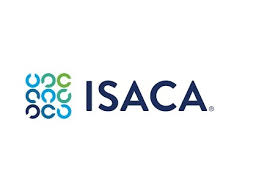Phone Designs that Paved their Way into the Future

On 27th April, International Design Day (IID) is celebrated, globally. While it looks like theres not much to celebrate at the moment, lets look at the history behind IID. IID was observed to promote designs for a better and brighter future where good designs serve mankind through improvements in the quality of life by socio-cultural, economic and environmental innovations. It is also an opportunity to recognise the role of design, its involvement and importance in our day-to-day life.
The word “Design” by itself is an umbrella term that encompasses several aspects such as sustainability, tools, aesthetics, function and growth, to name a few. A product that comprises multiple design elements, or at least most of them, is a smartphone. While most attention is paid to advancing technology, the worlds mobile culture has been enriched by these occasional bursts of outstanding design. Even more exceptional is for a mobile phone to emerge in the class of fine art and excellent craftsmanship. We know that the idea of a good looking phone might vary from person to person, but a few do stand out.
We set out to discover the best design trends in mobiles that have emerged over the past for some rare industrial design gems. The phones on this list are our picks. Although you might differ with the order, you will agree that they look spectacular! This is our list of the most iconic phones.
Iconic handset designs –
- Motorola StarTAC
- Apple iPhone 3G
- Nokia N95
- Motorola Aura
- The Ericsson T28
- Samsung Galaxy Fold
Motorola StarTAC
The Motorola StarTAC phone was everything that other phones were not: sleek, small and stylish. Often touted to be the first “clamshell” design, it was the most slender, portable cell phone in the world, with an approximate weight of 88 gms.
For its launch, magazine ads for the phone had included an actual size cardboard replica that could be pulled from the page to demonstrate the miniature size of the device.
It was the first phone to offer a discreet vibrate mode instead of an annoying ringer. In essence, it was a cell phone that you wouldnt mind being seen using.
Nokia N95
Announced in September 2006, the handset was released to the market in March 2007.
With the N95, Nokia embraced a two-way sliding design that let you push the screen up and let your fingers roam over a nicely textured keypad, or slide it down to reveal a fashionably touch-sensitive media-player control. This also switched the N95s stunning 2.6-inch screen into landscape mode and activated its new 3D multimedia menu. It was a sophisticated model that was marketed as a “multimedia computer“. Nokia N95 was among the first mobiles to have a built-in camera with a 5-megapixel resolution.
In the realms of pure portability and ease of communication, the N95 was in a league of its own. It represented the very pinnacle of technological miniaturisation without sacrificing usability, flexibility or style.
Motorola Aura
Motorola Aura was a stunning piece of industrial design; Gorgeous screen, groovy rotating cover with visible gears, etched stainless-steel body, with weighty and quality feel.
Part of the Auras appeal lay in its hefty, 15mm-thick, etched stainless-steel body, a rotating top section that flips around 180 degrees to reveal the keyboard. It responded to the merest push from either the left or right side.
It was a round peg in a square world. The MOTOAURA was one unique phone – you could either love it or hate it; there was no room for some third option.
The Ericsson T28
When Ericsson launched the T28 in 1999, it was the slimmest and lightest phone on the market. Unlike its brick-shaped peers, the T28 was instantly distinguished by its signature antenna stub and “active flip” keypad cover. It had a sporty and minimalist look and feel. One of the other unique design elements of the T28 was the back/chassis, cast in magnesium alloy, providing the handset with incredible rigidity and durability.
The flip was not just there for display. It protected the phone from accidental pocket dialing and phone calls could be answered and ended with it. The T28 was a premium device, ahead of its time.
Apple iPhone 3G
Before the iPhone came out, smartphones were clunky devices, half keyboards and half screens. The iPhone created a new mould of phone designs by eliminating most physical hardware buttons and eschewing a stylus for its screen-based interface, instead featuring only a few physical buttons and a touch screen. “Were going to use the best pointing device in our world,” said Jobs. “Were born with 10 of them, our fingers.”
The iPhone was the first to feature a small “Home” button on it. It was also remarkably thin – at less than half an inch, it was thinner than any smartphone in the market.
Samsung Galaxy Fold
Nearly all flagship smartphones rely on the same increasingly generic design, no matter how slick they are. That made it pretty hard to be impressed when something new came up. The Samsung Galaxy Fold did not suffer from that problem at all – it was on an entirely new level. The Galaxy Fold delivered a wow factor that no other phone came close to offering.
Theres the utter joy and excitement of holding a foldable phone – and seeing it built up when you saw an app running on the front screen instantly pop up on the larger display and when you started running three apps at once on the bigger canvas.
The Samsung Galaxy Fold was the most advanced-thinking and best-looking smartphone of 2019, finally delivering on the promise of a foldable phone, and instantly proving a real head-turner out on the streets.
With this list of phones, we hope to have brought back some nostalgia as you reminisce about a few of these models you might have owned and enjoyed yourself.
![]() This feed is automatically published via newsvoir.com
This feed is automatically published via newsvoir.com


